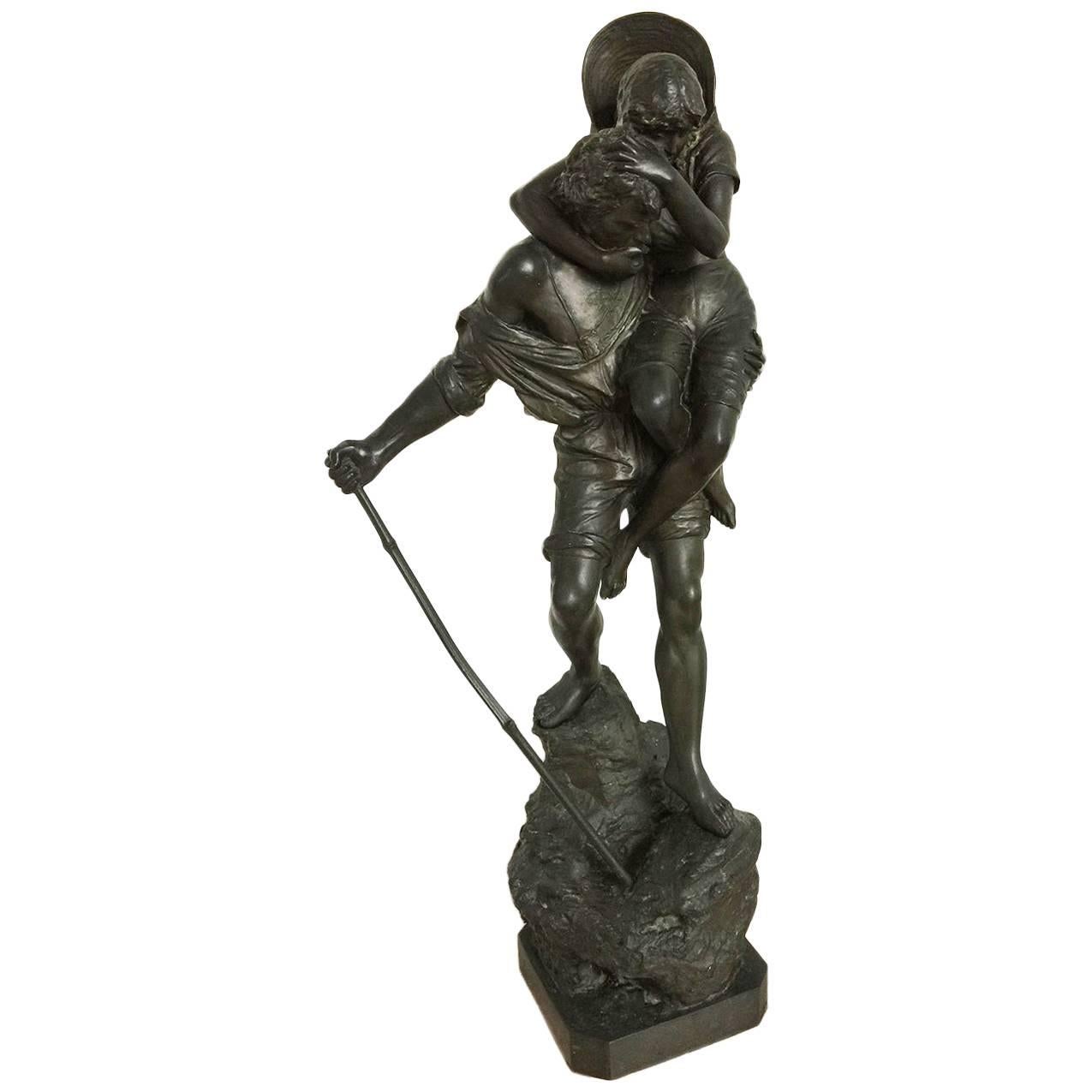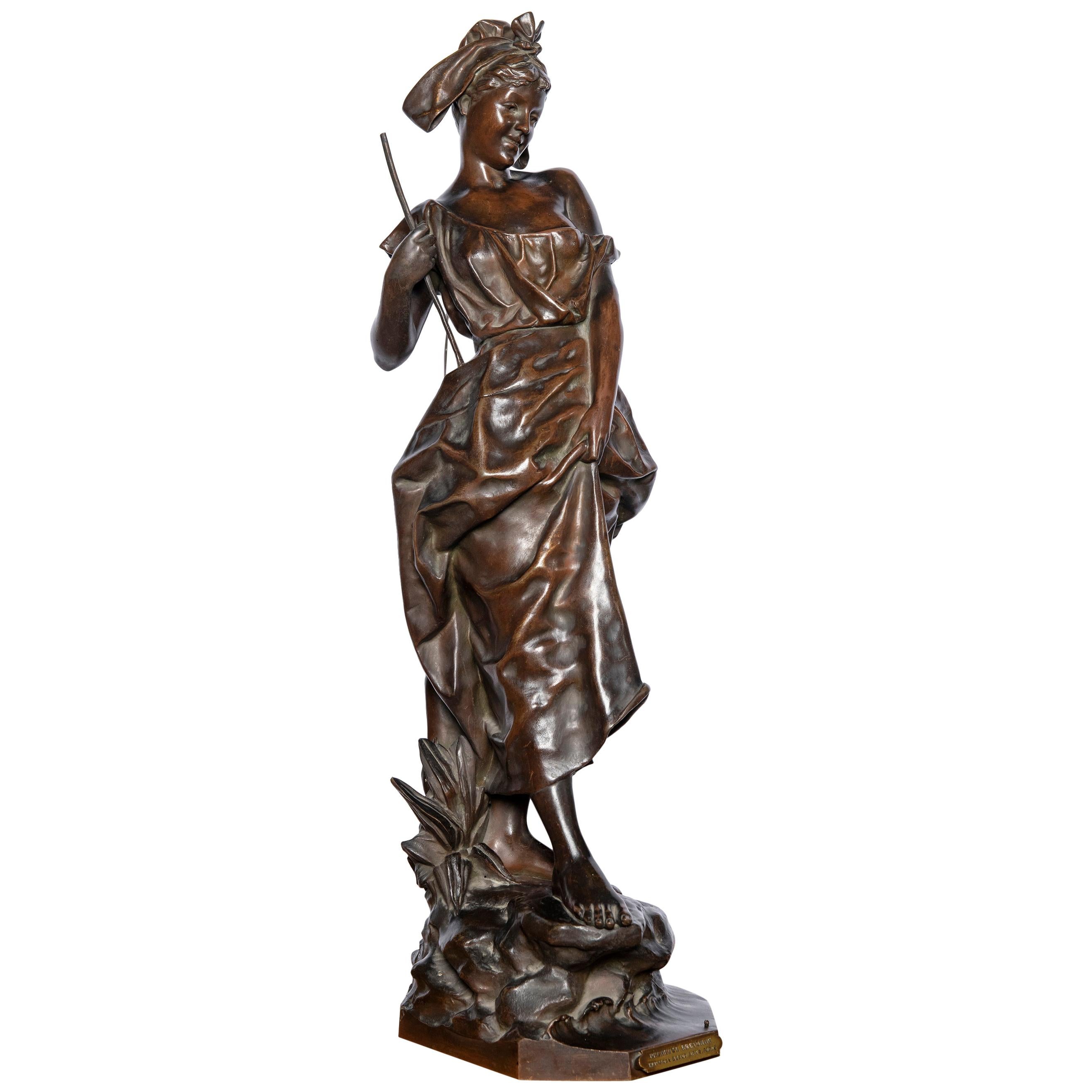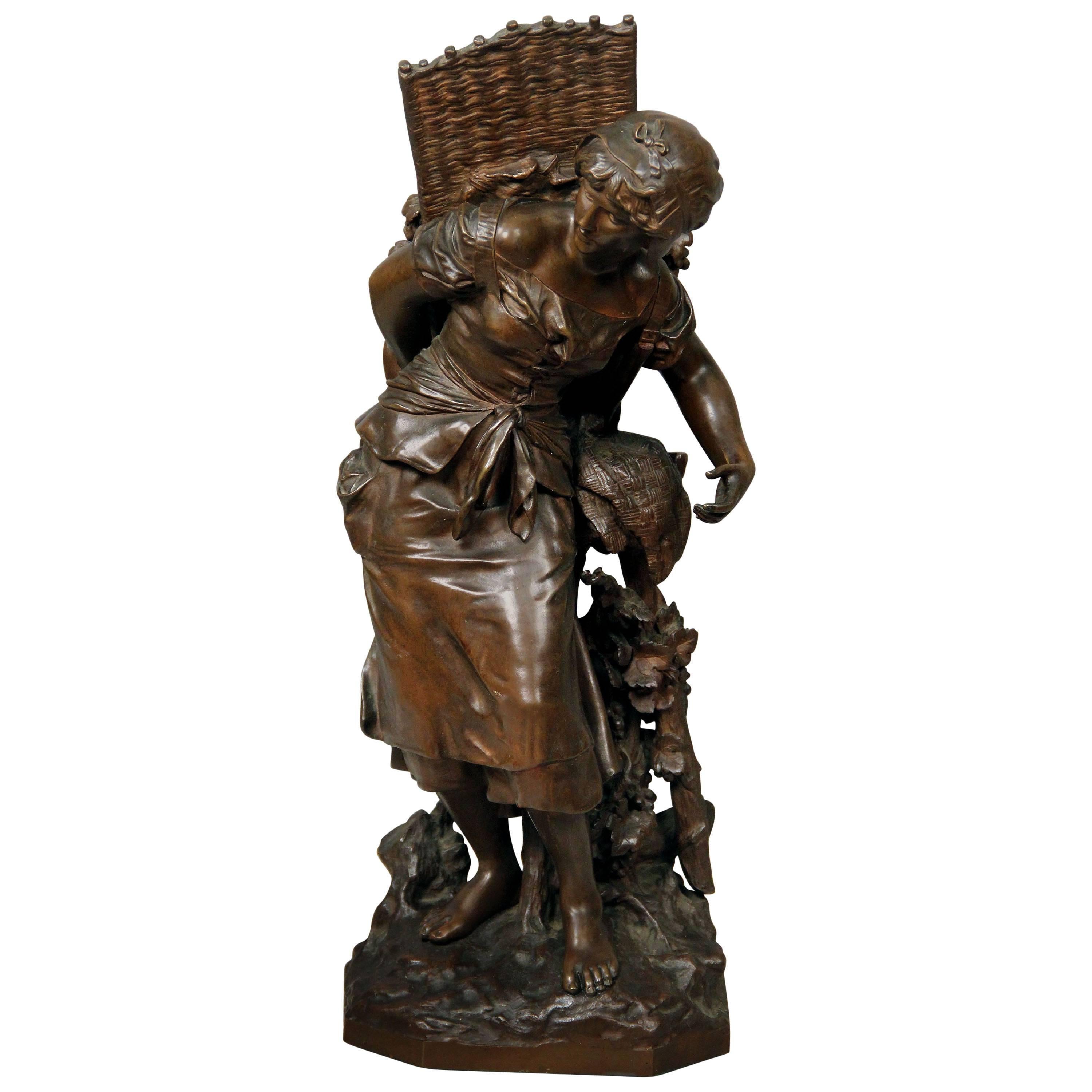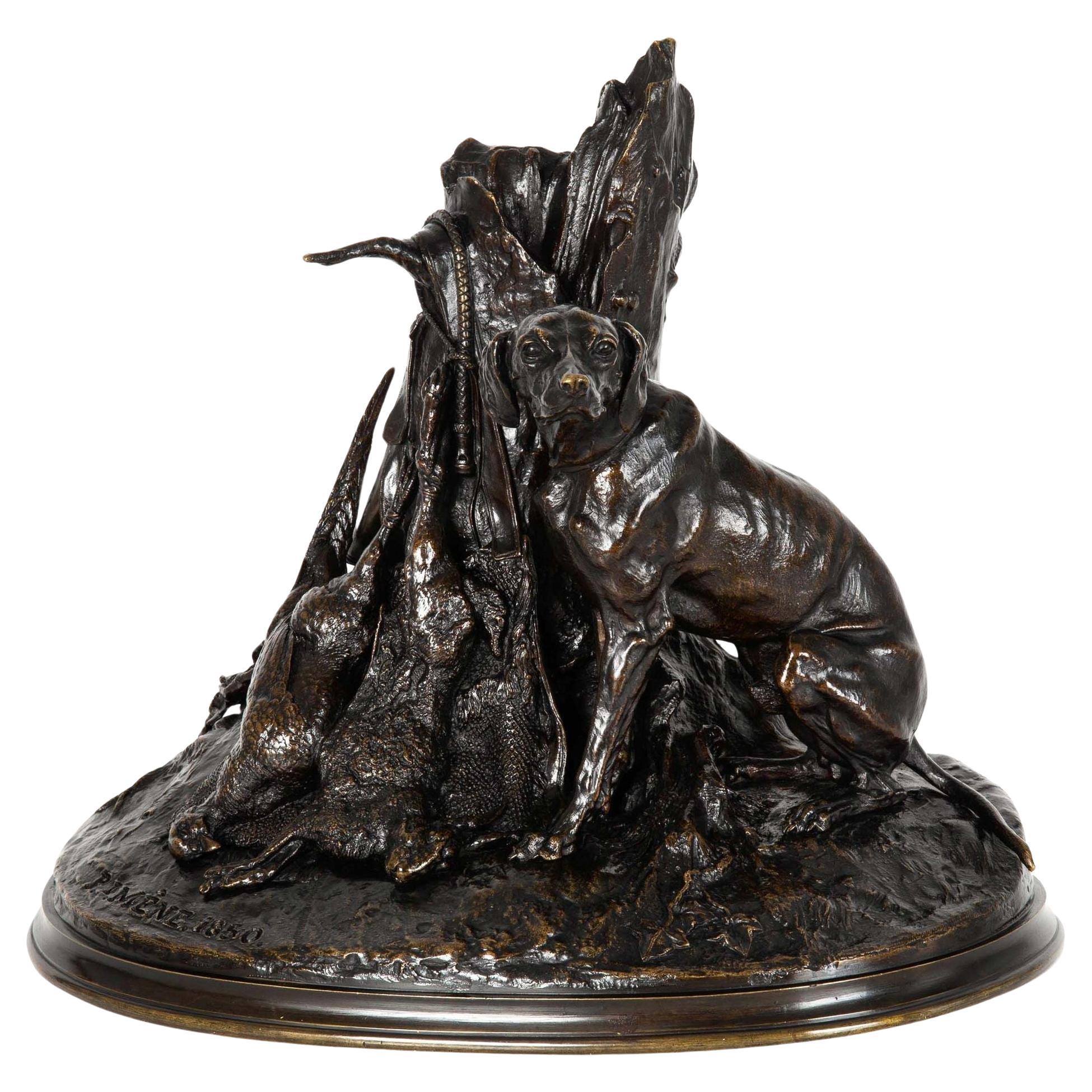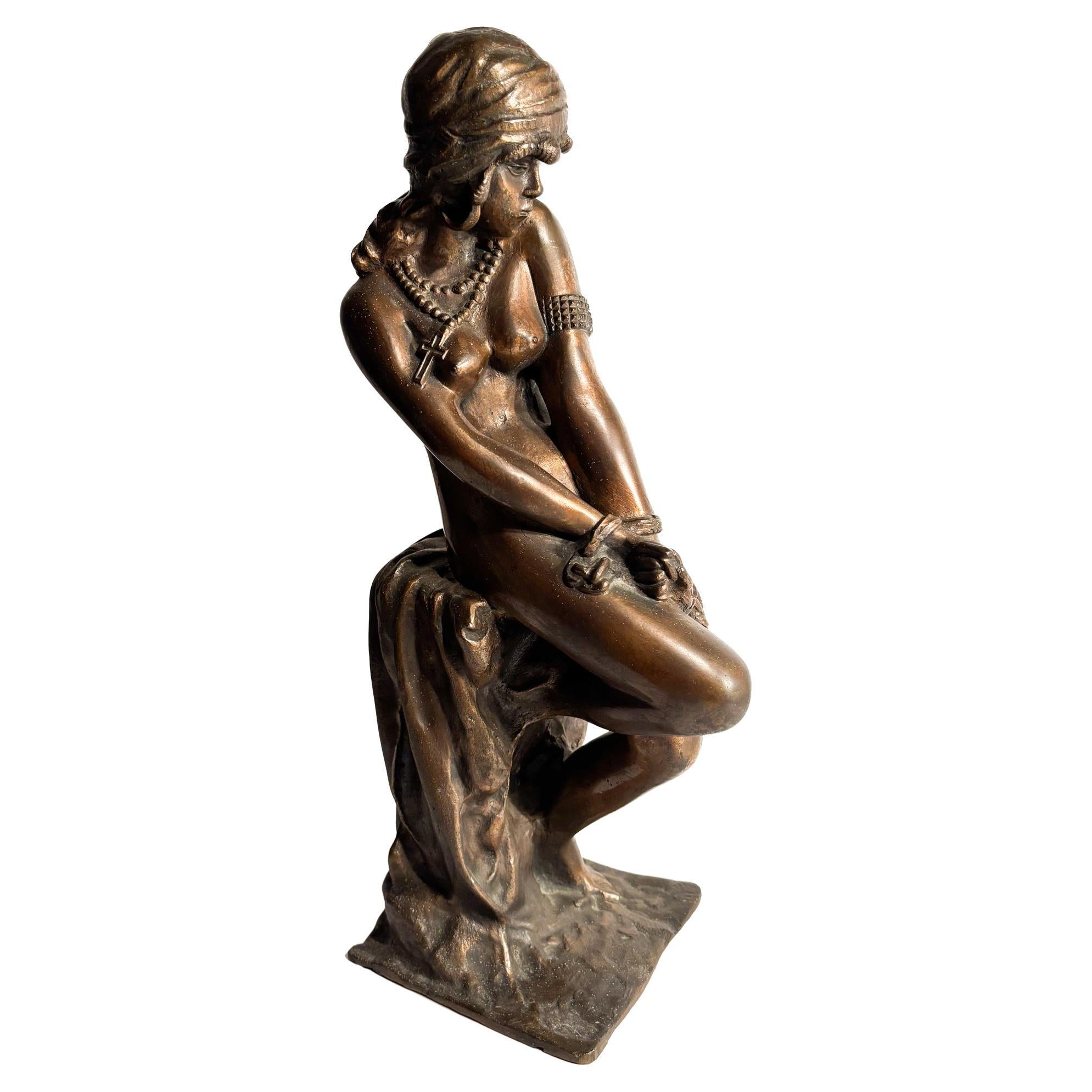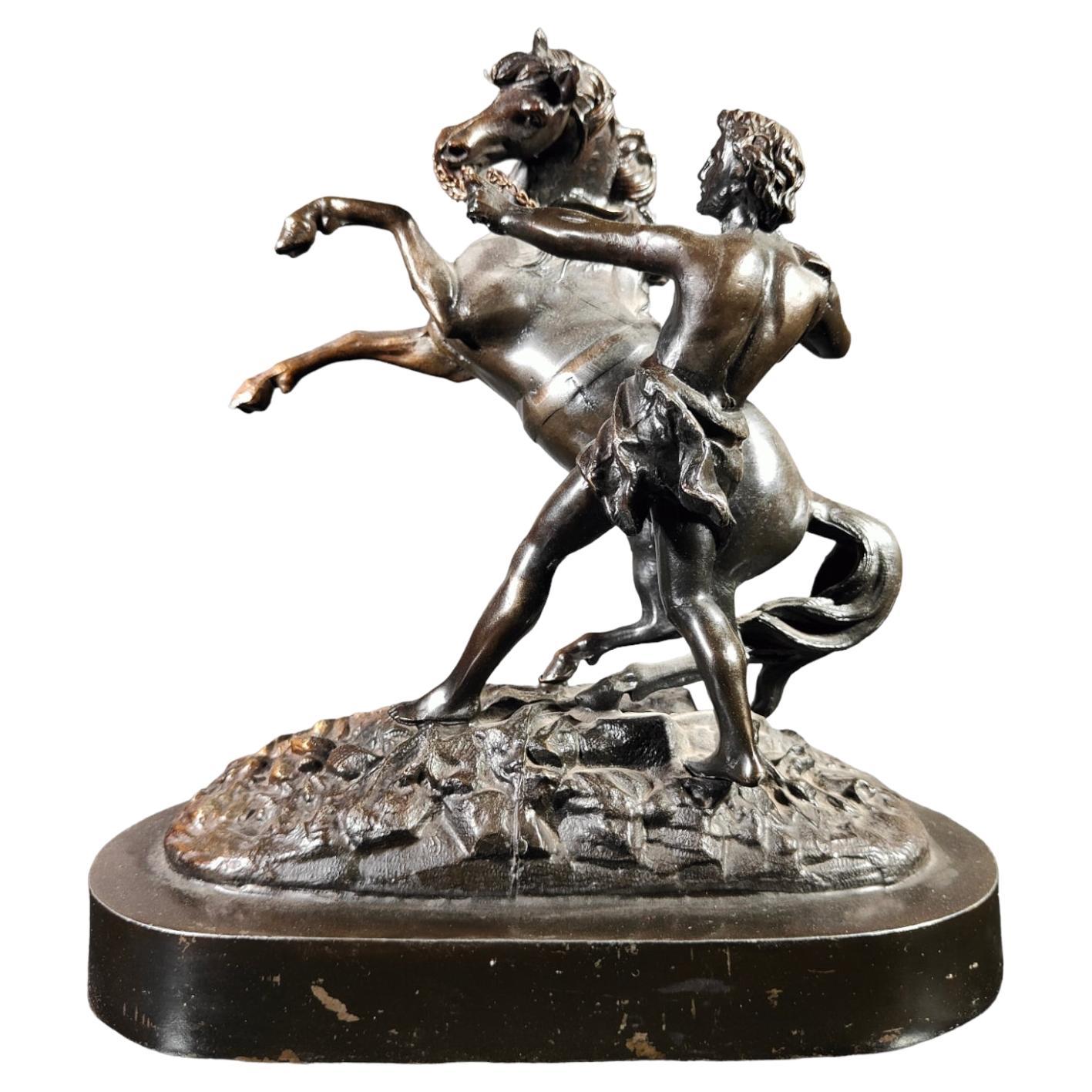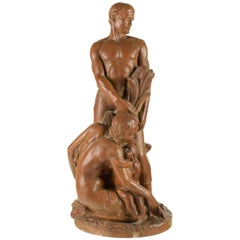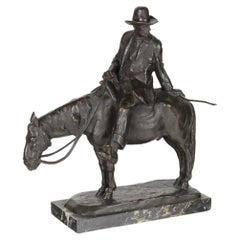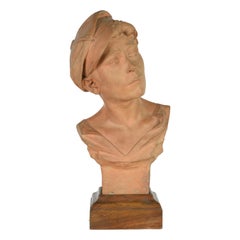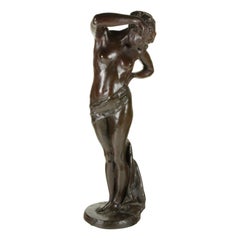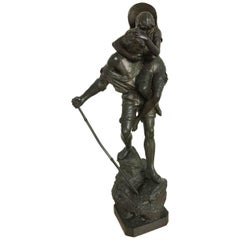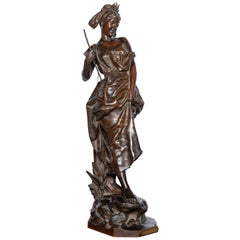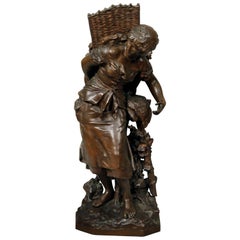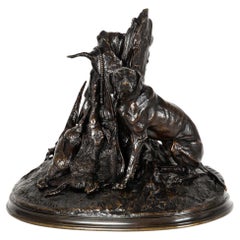Items Similar to Maiden with Goat by Odo Franceschi (1879-1958) bronze, Florence, Italy
Video Loading
Want more images or videos?
Request additional images or videos from the seller
1 of 13
Maiden with Goat by Odo Franceschi (1879-1958) bronze, Florence, Italy
$5,572.30
£4,170.26
€4,700
CA$7,687.47
A$8,548.79
CHF 4,490.01
MX$104,517.52
NOK 55,949.81
SEK 52,745.56
DKK 35,778.73
About the Item
Maiden with Goat
Florence, Early 1900s
Odo Franceschi was born in Sesto Fiorentino in 1879. A student of Emilio Zocchi, Augusto Rivalta and Urbano Lucchesi, he began his studies at the Professional School of Art in his hometown and then continued his training at the Academy of Fine Arts in Florence and the Free School of the Nude.
Also a ceramist, he worked as a collaborator in the Ginori factory's art studio and in 1921 became a partner-owner of a small business related to the production of ceramics, terracotta, and stoneware. A teacher at the Sesto Fiorentino School of Art, he is the author of portraits, genre works, public monuments and funerary works. At a very young age he began his artistic career by making the Monument to "Umberto I" for the town of Castello in 1904.
In the 1920s he was commissioned monuments to the Fallen in various towns in the Province of Florence and Prato: Mercatale Val di Pesa (destroyed), San Casciano Val di Pesa (1923, destroyed), Monteridolfi Val di Pesa, Montemurlo (1924), Barberino Val d'Elsa (1926), Cerbaia (1928, destroyed), Castello (1923) and Sesto Fiorentino (1925).
For Sesto Fiorentino he also executed the monument to "Carlo Ginori" (1930, destroyed), the bust of which remains, currently preserved in the Doccia Museum in Sesto Fiorentino. In Barberino Val d'Elsa he made the monument to the poet "Francesco da Barberino" (destroyed) and for San Casciano Val di Pesa the plaque dedicated to Minister Sidney Sonnino.
He is the author of numerous funerary monuments located in the cemeteries of Tolentino, San Casciano Val di Pesa, Sesto Fiorentino, Rifredi, Fiesole, Soffiano, Antella, Trespiano, and San Miniato. At the Giogo Pass (Scarperia) he created the monument to the "American Soldier": of the mausoleum, in memory of those who fell on the Gothic Line during World War II, destroyed in the 1970s, the travertine structure remains while a copy of the statue, depicting a soldier in a resting position, is located at the Falciani American Cemetery near Florence.
In 1909 he won the I Premio at the Esposizione Donatelliana in Livorno with the work "Stanco," in 1917 he was awarded at the Esposizione del Soldato in Florence and in 1931 at the Esposizione di Montecatini Terme.
The bronze "Cain" is kept in the Pinacoteca di Ravenna, while the busts of "Father Timoteo Bertelli" and "Urbano Lucchesi" are in the Pinacoteca di Lucca.
The artist died in Florence in 1958.
- Dimensions:Height: 15.75 in (40 cm)Width: 17.72 in (45 cm)Depth: 10.63 in (27 cm)
- Materials and Techniques:
- Period:
- Date of Manufacture:1950 Circa
- Condition:Wear consistent with age and use.
- Seller Location:Prato, IT
- Reference Number:1stDibs: LU5715236795612
About the Seller
5.0
Vetted Professional Seller
Every seller passes strict standards for authenticity and reliability
Established in 1965
1stDibs seller since 2021
17 sales on 1stDibs
Typical response time: 1 hour
- ShippingRetrieving quote...Shipping from: Prato, Italy
- Return Policy
Authenticity Guarantee
In the unlikely event there’s an issue with an item’s authenticity, contact us within 1 year for a full refund. DetailsMoney-Back Guarantee
If your item is not as described, is damaged in transit, or does not arrive, contact us within 7 days for a full refund. Details24-Hour Cancellation
You have a 24-hour grace period in which to reconsider your purchase, with no questions asked.Vetted Professional Sellers
Our world-class sellers must adhere to strict standards for service and quality, maintaining the integrity of our listings.Price-Match Guarantee
If you find that a seller listed the same item for a lower price elsewhere, we’ll match it.Trusted Global Delivery
Our best-in-class carrier network provides specialized shipping options worldwide, including custom delivery.More From This Seller
View AllEmanuele Zambini Terracotta Sculpture
Located in Prato, IT
Firenze, Italy, 1942
In terracotta
Signed Emanuele Zambini
Measure: Height 61 cm.
Category
Vintage 1940s Italian Figurative Sculptures
Materials
Terracotta
Bronze Sculpture “Man on Horseback” by Giulio Cipriani
Located in Prato, IT
Giulio Cipriani (1887-1956)
Sculpture In dark patina bronze with black marble base.
Dimensions cm W44 x D29 x H50 approx.
Category
Mid-20th Century Italian Animal Sculptures
Materials
Bronze
Vincenzo Rosignoli 'Assisi, 1856 - Firenze, 1920' Scugnizzo
By Vincenzo Rosignoli
Located in Prato, IT
He lived for many years in Florence, where he was a pupil of the sculptor augusto passaglia. He decorates numerous florentine buildings and creates various sculptures in tuscany and ...
Category
Antique Late 19th Century Italian Busts
Materials
Terracotta, Walnut
Bronze Sculpture Signed Prof. Puntelli nude young girl
Located in Prato, IT
In dark patina bronze
Signed by Prof. Puntelli
Measures: Height 75 cm.
Category
Vintage 1910s Italian Figurative Sculptures
Materials
Bronze
Flying Mercury in green marble copied from the famous work of Giambologna
Located in Prato, IT
Green serpentine marble sculpture
Late 19th century
Height approx. 88 cm.
The flying mercury and the bronzes
While he was still busy working on the fountain in piazza Maggiore, the papal delegate Cesi asked Giambologna for a statue to be placed in the courtyard of the Archiginnasio, seat of the ancient and prestigious Bolognese university; he should have painted a bronze depicting the god Mercury with his index finger stretched towards the sky, a symbol of the divine origin of knowledge, which would have served as a warning to all students.
The project was never completed, but Giambologna elaborated a model preserved at the Civic Museum of Bologna, which is only the first of the numerous bronzes with the same subject made by the artist, defined precisely as flying Mercury. In later versions, the sculptor transformed Mercury into a much more dynamic figure reaching upwards, as if ready to take flight, giving it an unprecedented freedom of movement and lightness. When he returned to Florence, the sculptor certainly proposed it to the Medici, who enthusiastically immediately ordered one to be sent to Emperor Maximilian II of Habsburg, as a diplomatic gift for the ongoing negotiations of the wedding between Francesco and Giovanna, sister of the sovereign.
Giambologna replied with the two bronzes preserved in Vienna and Dresden and in 1580 cast the large Mercury now exhibited in the Bargello, originally intended for the loggia of the villa of Cardinal Ferdinando dei Medici to crown a fountain placed in the center of a magnificent decorative complex; the only variant with respect to the previous examples is constituted by the head of Zephyr placed under the foot of the god and from which a breath of wind blows it upwards, accentuating the sense of immateriality. In addition to the successful invention of the flying Mercury, Giambologna acquired immense fame by making numerous other bronzes for the Florentine collectors of the time; his first patron, Bernardo Vecchietti must certainly have owned many, given to him in part by the sculptor in exchange for his protection, but around the 1880s it can be said that there was no collector who did not aspire to own a work by Giambologna, especially those of small format.
The development of this trend in Florence is largely due to the artistic passions of the Grand Duke Francesco I, who with the creation of environments such as the Studiolo in Palazzo Vecchio and the Tribuna degli Uffizi, provided new criteria for the exhibition of the works, pushing all collectors to imitate his extraordinary collection. In the Studiolo, in addition to the painted tables that decorated the doors of the cupboards filled with all kinds of things, there were 8 niches containing bronze figures of divinities; Giambologna painted the one depicting Apollo (1573-75), with the characteristic serpentine pose and beautifully finished.
The placement of the statuette in the niche was no longer an impediment to the plurality of views as Giambologna endowed it with a sort of mechanism that allowed it to rotate. For the Tribune he instead created the six Labors of Hercules (1576-1589), small silver sculptures...
Category
Antique Late 19th Century Italian Figurative Sculptures
Materials
Marble
Finely Modeled Terracotta Capital with Cherubs, Late 19th Century
Located in Prato, IT
Florence, late 19th century
Break repaired with old restoration (see photos)
Dimensions: cm H 30 x L 33 x P 26.
Category
Antique Late 19th Century Italian Figurative Sculptures
Materials
Terracotta
You May Also Like
19th Century Italian large Bronze Statue by Ettore Ximines
Located in Delft, NL
19th Century Italian large Bronze Statue by Ettore Ximines
Ettore Ximines, Italy, 1855 (Palermo)-1926 (Rome)
Man carrying woman on shoulderIn fabulous condition
The patina of the s...
Category
Antique Late 19th Century Italian Figurative Sculptures
Materials
Bronze
Bronze Sculpture Signed G. Obiols, Titled "Pecheuse Bretonne", France
By G. Obiols
Located in Buenos Aires, Buenos Aires
Bronze sculpture signed G. Obiols, titled "Pecheuse Bretonne", France, late 19th century.
Category
Antique Late 19th Century French Art Nouveau Figurative Sculptures
Materials
Bronze
Lovely Late 19th Century Bronze Sculpture by Mathurin Moreau
By Mathurin Moreau
Located in Long Island City, NY
Late 19th century bronze sculpture of a woman in a vineyard carrying grapes.
Signed Math Moreau on the base.
Mathurin M...
Category
Antique Late 19th Century French Belle Époque Figurative Sculptures
Materials
Bronze
French 19th Century Bronze Sculpture “Gardant du Gibier” by Pierre-Jules Mêne
By Pierre Jules Mêne
Located in Shippensburg, PA
PIERRE-JULES MÊNE
France, 1810-1879
"Chien Gardant du Gibier" (1850)
Sand-cast patinated bronze signed in cast "P.I. MÊNE 1850" cast circa 1870-1880
Item # 405ZIM29Q
One of Mên...
Category
Antique 19th Century French Animal Sculptures
Materials
Bronze
Bronze Sculpture "The Slave Girl" Attributed to Giacomo Ginotti 19th Century
Located in Milano, MI
Bronze sculpture "The Slave Girl," the making of which is attributed to Giacomo Ginotti in 1800
Ø cm 15 Ø cm 20 h cm 44
Giacomo Ginotti (1845-1897) was an important 19th-century It...
Category
Antique 1880s Italian Neoclassical Figurative Sculptures
Materials
Bronze
French Bronze from the Beginning of the Years 1900
Located in Madrid, ES
French bronze from the beginning of the years 1900.
Beautiful French bronze from the beginning of 1900. In good condition and has a nice patina. Measures: 28x27x14 cm.
Category
Antique Early 1900s Animal Sculptures
Materials
Bronze
